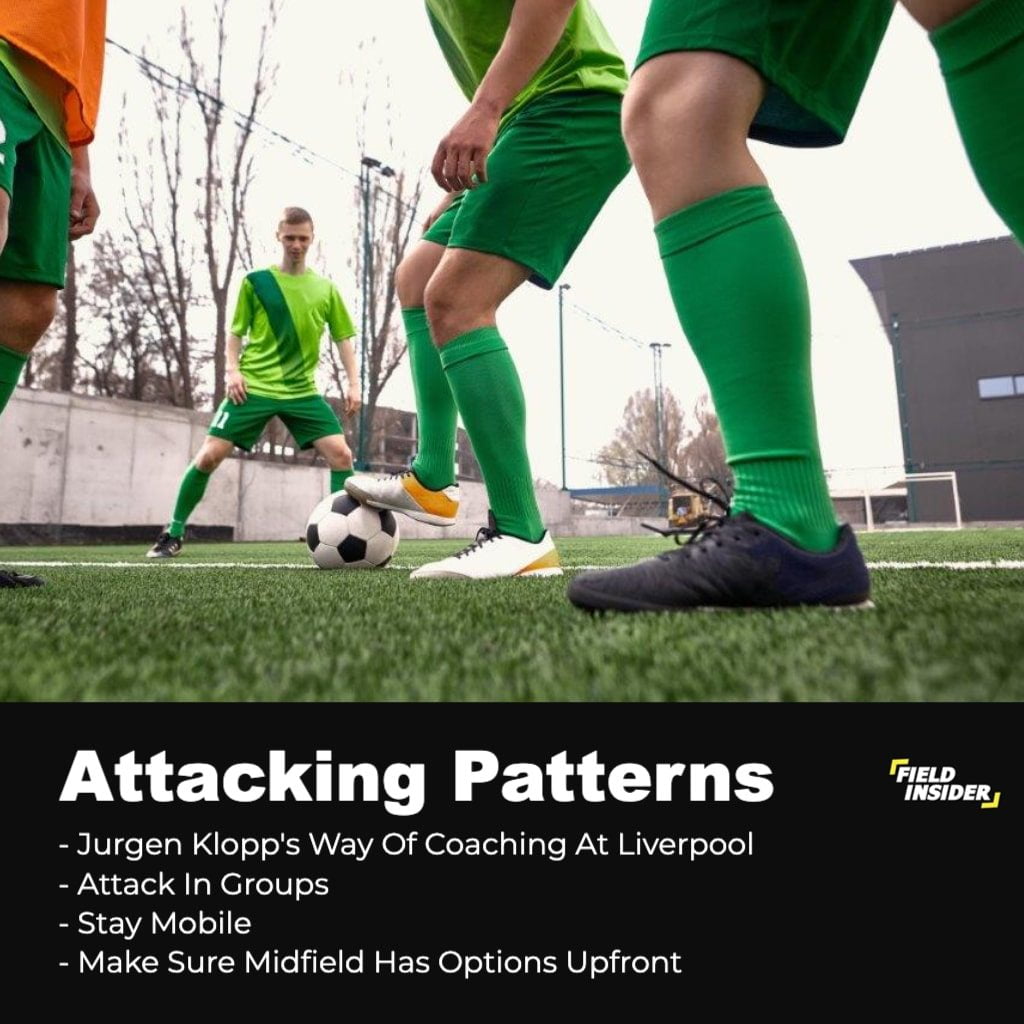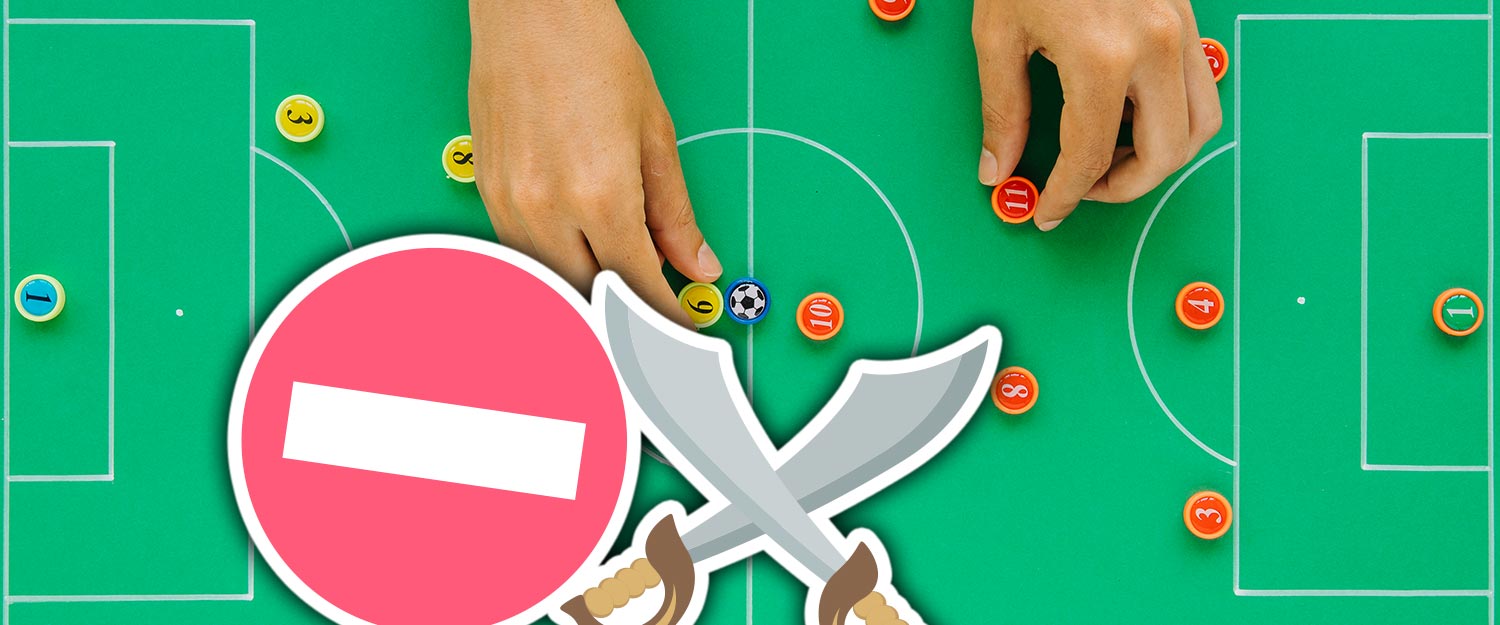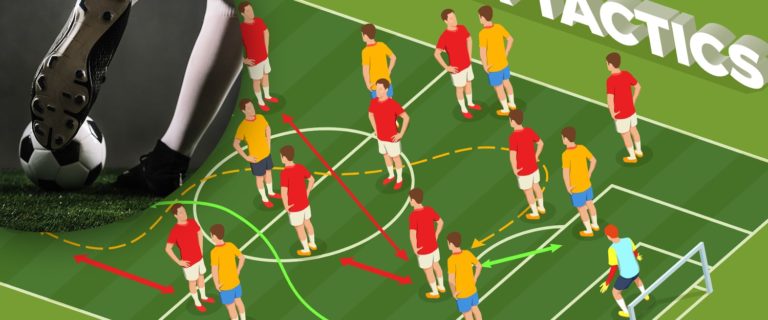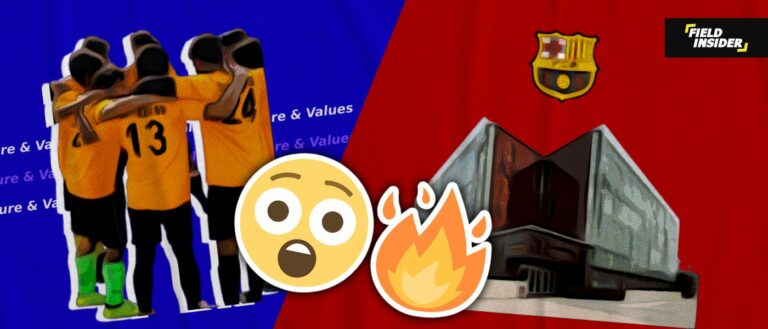Formations In Football – Defensive vs Attacking
There’s a very general debate about which is the better approach to games between a defensive one and an attacking one. Between the pragmatic and the romantic.
There are many different factors to consider, and we’re going to talk about some of them here. The context is also very important, but today we’re going to talk about defensive v. attacking formations. And everything you need to know about each approach to a football game.
Defensive Formations in Football
Football can be quite reactionary at times. As a football manager, you’re not always going to have the best players and resources to dominate every single time. Especially if you’re coaching a small team, so it’s important to understand the defensive side of tactics. In order to handle a much stronger opposition in terms of attacking resources.

are defensive formations bad? ‘the reality’
Having a defensive formation in football is something that is poorly viewed in something circles of this sport’s community. Claiming that is cowardly, boring or that it hurts the beauty of the game. The reality is that having a solid defensive approach is a resource that can help you in different situations.
And provide you with another set of tools for your team’s box, so to speak. For example, Manchester United beat FC Barcelona in the 2008 UEFA Champions League semi-finals. Because the English team’s defense was so solid that an attack boasting the likes of Samuel Eto’o, Ronaldinho, and Lionel Messi could not bring them down. So, it’s important to have a good defense, not only in terms of player. But also in tactics and formations.
the upside of defensive formations:
Here you have some of the main benefits that you get by applying a solid defensive formation in your team:
- Less chances of you receiving goals (obvious, but yet important to point out).
- Your attacking players will have much more confidence bombing forward knowing they are better backed.
- Less pressure on your attacking players. No matter how good your attacking players are, you can’t win every game 5-4.
- As we have pointed out so far, the capacity to grind out positive results against stronger opposition.
- More tactical flexibility.
Key Traits of Defensive Formations
Every single formation in football can be used in an attacking or defensive matter. The key lies in setting up a clear way to win the game. Exploit the opposition’s weaknesses and being disciplined and good enough to pull it off.
There are teams, like the 2019/20 Atalanta side. That can play a back-five and score one hundred goals in a season. There are teams that can play a 4-2-3-1. And hold possession of the ball for large portions of the game and fail to score on a regular basis. Like Louis van Gaal’s Manchester United side.
In that regard, here you have some of the key traits. That define a solid defensive formation that you should take into consideration:
Slow Down The Pace
One of the key aspects of defending is delaying; the more your delay your opposition’s moves, the less effective they are going to be. Most young defenders, energetic and eager to prove themselves, tend to pressure their opposition a lot.
In this situation, slowing down the pace means good positioning to close the opposition’s passing rage or capacity to move. For example, if an attacking player from the opposition is on the edge of your box. And he or she is going for the best position to shoot.
Your defender should position in a way to close down said attacking player’s range of passing. That can be done with just a couple of movements by your defender. Without even touching or pressing your rival.
Defensive Transitions
If you are going for a defensive formation (and most likely, a defensive approach to a game). Then you must prepare for the occasions when you lose the ball. Jürgen Klopp, Liverpool’s manager, has a rule of having the time to retrieve the ball with pressing. And do so in less than five seconds after having lost it.
Which has become a trademark trait of his Borussia Dortmund and Liverpool teams. Jose Mourinho, one of the most successful managers of all time. Teams such as Porto, Chelsea, Inter, Real Madrid or Manchester United, would usually have his teams sitting deeper once they lose the ball. In order to maintain defensive order and not be exposed to counterattacks.
discipline:
Defensive transitions are asBecause it shows how you are going to react to your rival having the ball and defending. At the end of the day, is reactionary.
Discipline here is paramount: it doesn’t matter if your defence is well-positioned once your team loses the ball. If your midfielders and forwards don’t join in the defensive efforts. Just like the modern game demands all the eleven players to be good with the ball at their feet (including the goalkeeper). It also demands all the players to pitch in with defensive output.
Pressing
Pressing has become synonymous with the modern game. Especially when wanting to get the ball back or simply trying to delay your rival. In this case, when it comes to a defensive formation. Pressing is meant to intercept your rival’s build up. And also to get the ball back. All standard stuff. It’s how you want to press that makes the difference.
There are players that are not well-suited to build up play; they simply don’t have the skillset to progress with their passing. So, something that a lot of teams and managers tend to do in these situations is not pressing that specific player.
When he or she has the ball. But rather focusing on marking the possible passing options that player has. Thus making him or her incapable of making progress to your box and usually ends up passing backwards. Away from your goalkeeper and obviously with less chances of scoring.
Close Down The Spaces
In modern football you have to be a very compact team and close down your rival’s spaces to operate. This is particularly true when it comes to footballers that play on the wings, such as full-backs and wingers; they usually need space to use their pace. While midfielders, more than space, usually need time to think. But it doesn’t hurt to close down their range of passing while doing so.
Some managers prefer man-marking. Focusing on having one of your players (or perhaps two or even three of them) going after a specific footballer from the opposition. Jose Mourinho is a huge fan of this approach.
With the man-marking that Spanish midfielder Ander Herrera did on Eden Hazard during Manchester United Vs Chelsea in 2017. On the other hand, there are managers like Louis van Gaal. Who prefers focusing on marking the space and not a player, which means that when an opposition’s player enters a certain area of the pitch, he or she has to be closed down or marked in order to stop the rival’s build-up.
It’s Not the formation, It’s the game plan:
Any formation can be offensive or defensive depending on how you set your team to approach the game. If you want to sit deep and give the ball to the rival, then it doesn’t matter than you have a 4-3-3 or a 5-3-2.
We mention Mourinho a lot in this article because he is one of the most known defensive managers in the game and he usually plays with a 4-3-3 or a 4-2-3-1 throughout his career, which are viewed as “offensive” formations, but he has given them a defensive approach. The same can be said about defensive mastermind Diego Simeone, who relies on a 4-4-2.
Attacking Formations in Football

Whether you have a great team or not, attacking football is often a reflection of the manager’s desire rather than tactical logic. We’re not saying that there are no tactics when it comes to attacking football (on the contrary), but rather that going forward and trying to score a lot of goals is something that the manager wants and wants to do on a regular basis.
If you’re on the onset of understanding football in a logical manner. You should keep it at the top of your head to understand the attacking football. Because it has risen to be a dire need in the modern dynamics of the game, which are in massive favor of the offensive style of the play these days.
is attacking football more pleasing?
Attacking football is often widely regarded by experts of the game because of how aesthetically pleasing and entertaining it can be, but there are also a lot of possible benefits that you can get by playing this particular brand of football.
Here we are going to mention that we consider the most important:
- You are going to score more goals and this allows you to win more games (very obvious, but it’s always important to point out).
- Attacking teams are usually in control of the game and that helps you to not set up your game plan solely on what your rival is doing (as we have seen, defensive tactics tend to be very reactionary).
- More time on the ball. Teams that attack more also have more time with the ball on their feet and this helps a lot because the opposition has to run more and they get tired at a faster rate.
- Players tend to enjoy the games more often. Of course, that depends on the players’ personalities, but a free-flowing playing style is usually a much more enjoyable experience for a footballer while defensive football tends to be much more tactical and disciplined, so that is something that can be frustrating at times, especially for attacking-minded players.
Key Traits of Attacking Formations
Much like it was the case in the section of defensive formations, it is important to point out that any line-up can be offensive and attacking-minded if you have the necessary traits for that.
lessons from pep guardiola:
Pep Guardiola is highly regarded as one of the greatest managers of all time and he usually plays with a 4-3-3, which is considered as an attacking formation, but throughout his career, especially during his time at teams such as Bayern Munich or Manchester City.
He preferred using a back three from time to time and that did not lessen the offensive output. Why? Because Guardiola set up his teams to attack, regardless of the formations he was using.
attack; a subjective approach:
Every single manager out there has his or her own football ideology that is shown in the team regardless of the formations they use–it becomes their teams’ identities and it is shown through patterns of play, off the ball movements, transitions and a lot of different aspects and elements that we see during a football game.
Attacking or defending has less to do with the formations, and more with the many automatisms, instructions and patterns that the team has. Having understood that, we are now going to show you the main traits that you need to consider when playing with attacking formations:
All Players Need To Be Good At Progressing With The Ball
Mind you, this is a trait that every single quality team should have, regardless of the style or approach to games, but this is particularly true if you want to play attacking football. And the reason for that is very simple: if you want your team to go forward to the opposition’s box, then you need players that can progress with the ball and deliver quality passing.
It is also worth pointing out that progressing with the ball is not just quality passing, but also having a good first touch, making incisive passing, capacity to play one-twos to break the opposition’s lines, good ball control and things of a similar ilk. It’s knowing what to do with the ball at your feet.
need to press:
Players that have issues passing and holding the ball often stand out in these teams because they cut the flow of the passing stream in said team. They are either easy to press because they give away possession of the ball very fast or because they are incapable of passing the ball forwards once the closest ball receptors are blocked by the opposition.
That is why we see even goalkeepers like Manuel Neuer from Bayern Munich being so skilful with the ball at their feet: because pressing has become a major trait in modern football teams and the better your skills with the ball, the less likely you are going to struggle with pressing and the better you are going to be to create opportunities to score.
Need to be fast:
Regardless of whether you want to play possession-based football like Pep Guardiola’s Barcelona side or fast-paced football like Jürgen Klopp’s Liverpool side, it is important that you are capable of upping the pace of your passing and plays because it means that you can catch the opposition off guard.
This is partly why legendary Dutch footballer and manager Johan Cruyff used to say that the:
“Less touches you make with the ball to achieve your objective the better“
JOHAN CRUYFF
Fewer touches translate to less reaction time for your rival. That is why some football players tend to struggle at first when playing in the Premier League–the pace is so high that they need time to catch on. And that is why some players tend to shine with their national teams and struggle in their clubs:
because the pace is slower due to a lack of preparation (national teams hardly ever train on a regular basis per year) and that gives them more time to think.
Attacking Patterns

Think of attacking patterns like a band preparing a concert: the drummer should do what his drum part is going to be once the guitar stops playing and the singer should know when to start singing again after an instrumental section. It’s all about fluidity and also becoming a functional team.
jurgen klopp’s liverpool:
Using Jürgen Klopp’s example once again, his current Liverpool has wingers like Mohamed Salah playing as inside forwards, which means they are going to cut inside to take a shot with their favourite feet.
Once they do that, fullbacks Andy Robertson and Trent Alexander-Arnold stay wide open to offer width to the team, which in return keeps the team with a lot of passing and offensive options. That, along with other different movements and plays, is the result of years of coaching, preparation and having the right group of players to perform that playing style.
Attack In Groups & Stay In Movement
The more players you attack with, the better you are going to do if the attacking patterns are well-developed and applied on the pitch. In this regard, it is important that the player heading to the final third has passing options or the play is eventually going to delay and that is one mistake in football that can be quite costly during the game. Make sure that the midfielders have options in front of them and that strikers are making runs.
There should be movement around your player holding the ball and it should be planned movement, as we already stated before.
If the players around the one holding the ball are static, then they are easier to mark, to press and to flat-out stop. That’s not good. The same goes for having very few attacking options upfront–it can really delay your attacks because the less options you have when attacking, the easier it is for the opposition to do man-marking.
Conclusion
Football is ever-changing and it is going to keep developing new trends, playing styles and approaches to the games. That is part of the beauty of the game. But regardless of what you want to do, whether it’s attacking with a 4-3-3, defending with a 3-4-3 or anything in between, just consider that is not the formations that makes the playing style –the ideology and the formations are just a by-products of the players that you have at your disposal.
Above all else, stick to your ideas, develop them, learn from your mistakes and always be willing to grow and improve as a manager. That is key to success.








